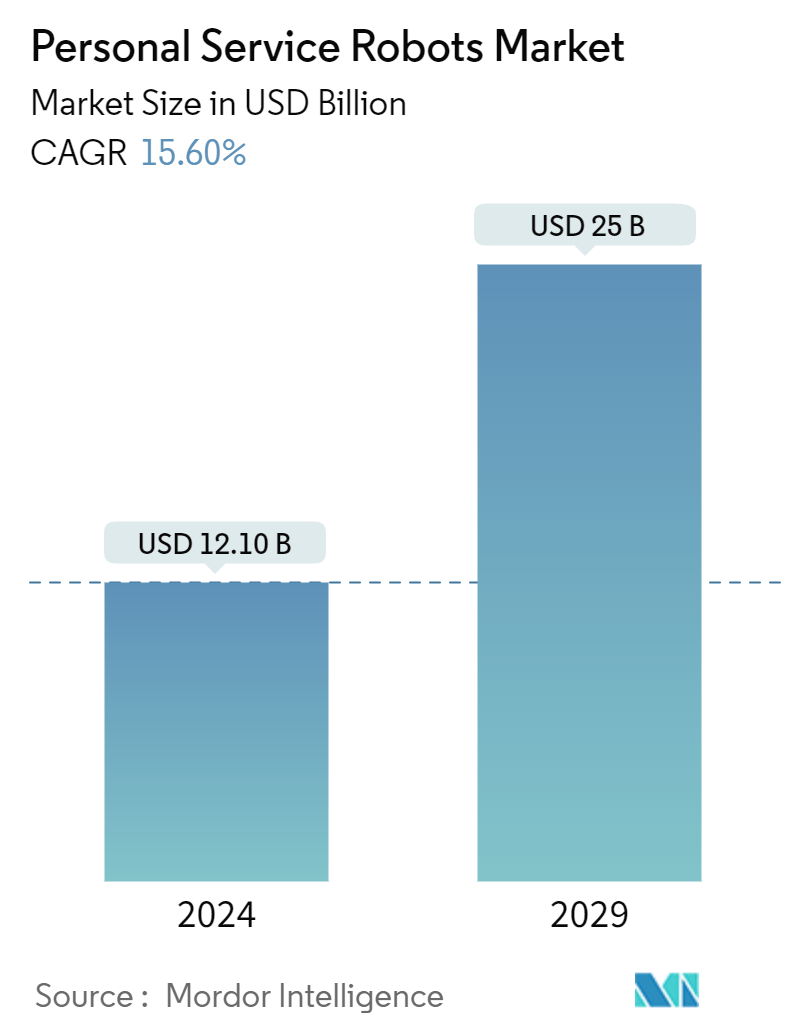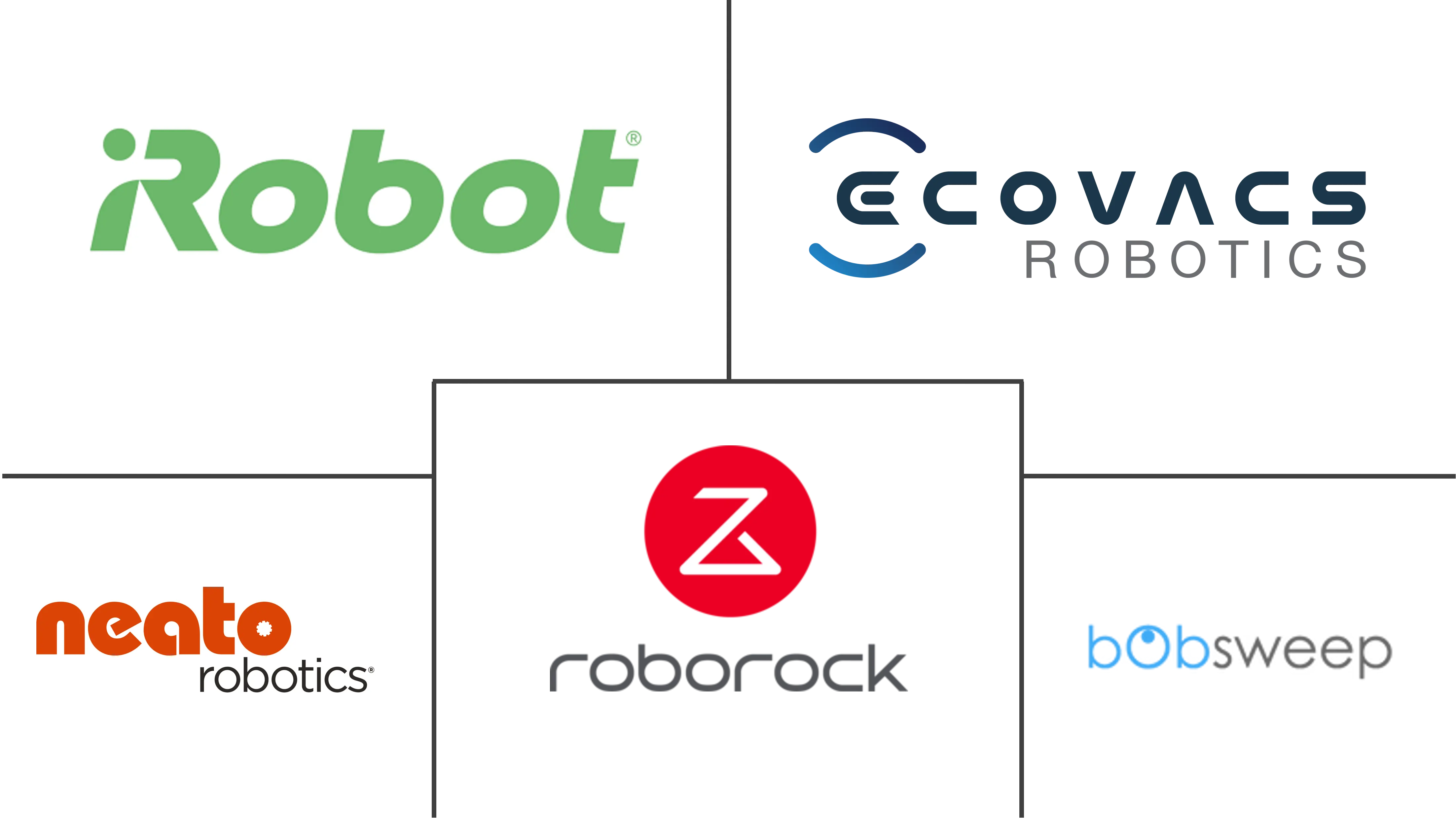Market Size of Personal Service Robots Industry

| Study Period | 2019 - 2029 |
| Market Size (2024) | USD 12.10 Billion |
| Market Size (2029) | USD 25 Billion |
| CAGR (2024 - 2029) | 15.60 % |
| Fastest Growing Market | Asia Pacific |
| Largest Market | Asia Pacific |
| Market Concentration | Medium |
Major Players
*Disclaimer: Major Players sorted in no particular order |
Personal Service Robots Market Analysis
The Personal Service Robots Market size is estimated at USD 12.10 billion in 2024, and is expected to reach USD 25 billion by 2029, growing at a CAGR of 15.60% during the forecast period (2024-2029).
- Robots have become the prevalent technology due to their numerous advantages in terms of reducing defective products, cutting costs, and increasing productivity and efficiency. Personal robotics is an innovation that enables consumers to utilize robotics technology for personal use. It is a sophisticated technology, but it is tailored for end users who may have limited knowledge about robotics. The increasing interest in humanoid robotics is driving the growth of the personal service robotics market.
- The personal service robots are becoming more affordable. Additionally, as the global population continues to age, there will likely be a growing demand for elderly assistance robots and cleaning robots. Many governments are currently investing in research and development to enhance elderly assistance robots and help increase productivity in the workforce.
- Increasing adoption of IoT in robotics, rising shifts toward domestic robots, and the introduction of intuitive technologies in robotics solutions are the key market drivers enhancing the personal service robotics market growth. Increasing cost-effective predictive maintenance using IoT in robots. Internet of Things (IoT) refers to the digital networking of diverse devices and systems to develop cohesive operations. Predicting possible problems before they arise is known as predictive maintenance. Terabytes of data may be stored using an IoT-based system.
- Machine learning (ML) algorithms can be executed simultaneously on multiple computers to forecast potential risks and detect when industrial equipment is at high risk of failure. This contributes to predictive maintenance. Online collection and analysis of robotic sensor data from heat and voltage sensors using ML techniques aid in uncovering hidden correlations and irregular data patterns. Consequently, this will enhance the revenue of the Personal Service Robotics market on a global scale.
- As a result, the market has expanded and become increasingly competitive due to the enhanced intelligence, adaptability, and capability of these robots. Additionally, changes in consumer preferences and lifestyles have had a significant impact on the market for personal service robotics.

